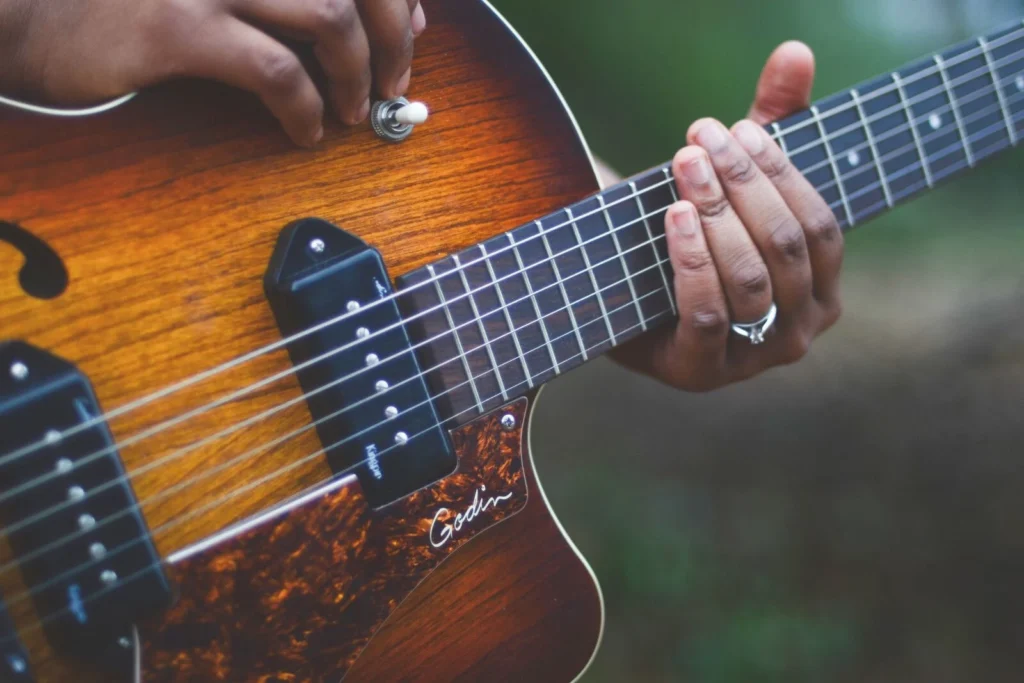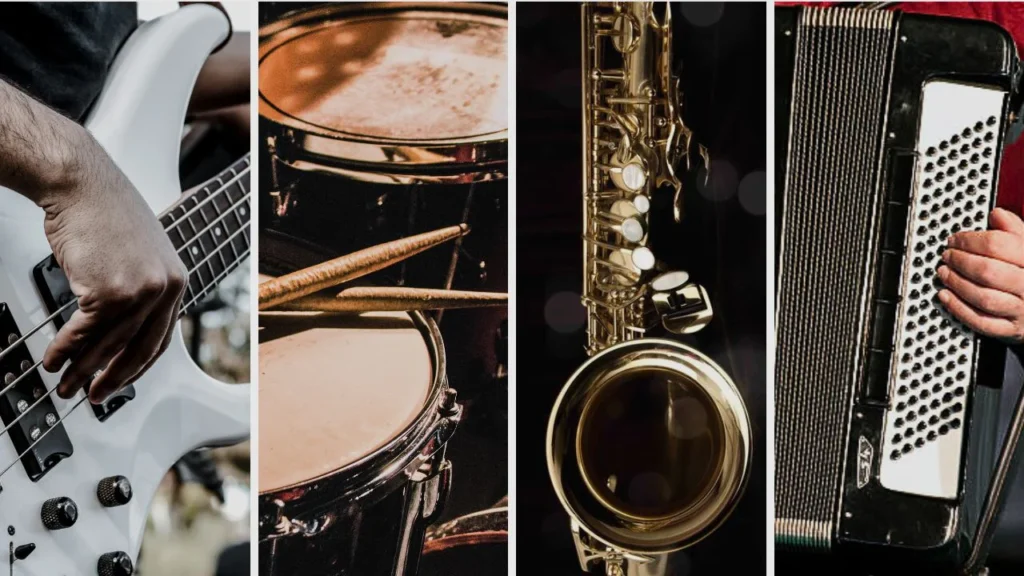These instruments not only broaden the horizons of musical expression but also integrate cutting-edge technology to offer unprecedented capabilities. This article explores ten Musical instruments born in this era, detailing their history, technical specifications, unique features, applications, and notable musicians who have embraced them.
Instrument 1: Eigenharp
History and Development
The Eigenharp, developed by Eigenlabs and first released in 2009, is a revolutionary electronic instrument designed to offer the expressive capabilities of traditional instruments with the versatility of modern technology.
Technical Specifications
The Eigenharp Alpha, the flagship model, features 120 highly sensitive keys, a built-in breath pipe, and a variety of control keys, allowing for a broad range of musical expressions.
Unique Features
The Eigenharp’s keys are pressure-sensitive and can detect multiple dimensions of touch, allowing for pitch bends, vibrato, and dynamic control. Its built-in sound library and customizable settings offer vast possibilities.
Instrument 2: Haken Continuum
History and Development
The Haken Continuum Fingerboard, designed by Dr. Lippold Haken, has been in development since the early 2000s, with significant refinements leading to its current form.
Technical Specifications
The Continuum features a touch-sensitive surface that allows for continuous control of pitch, volume, and timbre. It provides 128 independent voices, making it a powerful tool for sound design.
Unique Features
Its highly responsive playing surface supports microtonal playing and seamless glissando, enabling musicians to perform highly expressive and intricate music.
Instrument 3: Seaboard
History and Development
Developed by ROLI and released in 2013, the Seaboard reimagines the traditional keyboard by providing a soft, continuous playing surface.
Technical Specifications
The Seaboard features a flexible silicone surface that responds to touch, pressure, and slide motions, offering polyphonic aftertouch and multidimensional expression.
Unique Features
The Seaboard’s surface allows for continuous pitch bending and dynamic control, making it a highly expressive instrument. Its integration with ROLI’s software ecosystem enhances its versatility.
Instrument 4: Roli Blocks
History and Development
ROLI Blocks, introduced in 2016, are modular music-making devices that connect to form a customizable and versatile instrument.
Technical Specifications
Each Block features a touch-sensitive surface with light-up guides, and they connect magnetically to form larger surfaces. The Blocks integrate seamlessly with ROLI’s software for a comprehensive music-making experience.
Unique Features
ROLI Blocks offers a modular approach to music creation, allowing users to expand and customize their setup. They support pressure, slide, and velocity sensitivity, enabling expressive performance.
Instrument 5: Artiphon INSTRUMENT 1
History and Development
The Artiphon INSTRUMENT 1, launched in 2015 following a successful Kickstarter campaign, is a versatile multi-instrument that can emulate various traditional instruments.
Technical Specifications
The INSTRUMENT 1 features a touch-sensitive surface with configurable buttons and a bridge, allowing it to be played as a guitar, violin, piano, or drum.
Unique Features
Its versatility lies in its ability to mimic multiple instruments, combined with MIDI compatibility, making it a powerful tool for music production and performance.
Instrument 6: LinnStrument
History and Development
Roger Linn, the inventor of the drum machine, developed the LinnStrument, which was released in 2014. It is designed to offer a highly expressive playing experience.
Technical Specifications
The LinnStrument features a grid of touch-sensitive pads that respond to pressure, slide, and velocity, offering expressive control over pitch, volume, and timbre.
Unique Features
Its multidimensional touch surface allows for expressive control, supporting pitch bends, vibrato, and other articulations commonly associated with acoustic instruments.
Instrument 7: AlphaSphere
History and Development
The AlphaSphere, developed by Nu Desine and released in 2012, offers a spherical interface for music creation, providing a unique and immersive playing experience.
Technical Specifications
The AlphaSphere features a series of pressure-sensitive pads arranged in a spherical configuration, with each pad capable of triggering different sounds and effects.
Unique Features
Its spherical design allows for a highly intuitive and expressive playing experience, supporting complex rhythms and melodies.
Instrument 8: Dualo Du-Touch
History and Development
The Dualo Du-Touch, created by the French company Dualo and launched in 2014, combines elements of a traditional keyboard with innovative touch controls.
Technical Specifications
The Du-Touch features a dual keyboard with hexagonal keys, a built-in synthesizer, and wireless connectivity, allowing for a versatile playing experience.
Unique Features
Its unique keyboard layout and integrated software make the Du-Touch a powerful tool for live performance and music production, supporting polyphonic and monophonic playing.
Instrument 9: Joué Board
History and Development
The Joué Board, developed by Joué Music Instruments and released in 2017, is a modular MIDI controller that offers a tactile and customizable playing surface.
Technical Specifications
The Joué Board features a silicone surface with interchangeable modules, each designed for different musical functions, such as keyboards, drum pads, and control sliders.
Unique Features
Its modular design allows musicians to customize their setup for different performances and production needs, providing a versatile and expressive platform.
Instrument 10: Jamboxx
History and Development
Jamboxx, designed as an accessible musical instrument for people with disabilities, was launched in 2014 by Jamboxx LLC. It is played using breath and simple head movements.
Technical Specifications
The Jamboxx features a harmonica-like interface that responds to breath pressure and direction, connected to a digital interface that controls MIDI instruments.
Unique Features
Its breath control mechanism makes the Jamboxx highly accessible to individuals with limited mobility, offering a unique and expressive way to create music.
Conclusion
Impact on the Music Industry
These instruments have significantly impacted the music industry, enabling new genres, techniques, and performances. They provide musicians with tools to push the boundaries of what is possible in music creation and performance.
Future Prospects of Modern Musical Instruments
As technology continues to evolve, the future of musical instruments looks promising. We can expect further innovations that will continue to enhance the way we create and experience music, making it more accessible and diverse.
FAQs
What defines a 21st-century musical instrument?
A 21st-century musical instrument is typically defined by its use of modern technology to offer new ways of creating and controlling sound, often integrating digital interfaces and advanced sensors for enhanced expressivity and versatility.
How do new instruments impact music creation?
New instruments impact music creation by providing musicians with novel tools and methods to express their creativity. They enable the exploration of new sounds, techniques, and genres, and often make music production more accessible and intuitive.
Are these instruments accessible to beginner musicians?
Many of these instruments are designed with accessibility in mind, offering intuitive interfaces and extensive educational resources. However, some may require a learning curve to master their advanced features fully.
What are the cost implications of these new instruments?
The cost of new musical instruments varies widely, with some being relatively affordable and others being high-end professional tools. Prices can range from a few hundred to several thousand dollars, depending on the instrument’s complexity and capabilities.
How have musicians adapted to these new instruments?
Musicians have adapted to these new instruments by incorporating them into their compositions, performances, and recordings. They often experiment with the unique features and capabilities of these instruments to create innovative music that pushes traditional boundaries.
